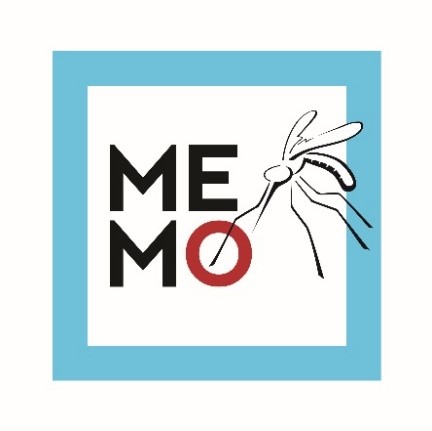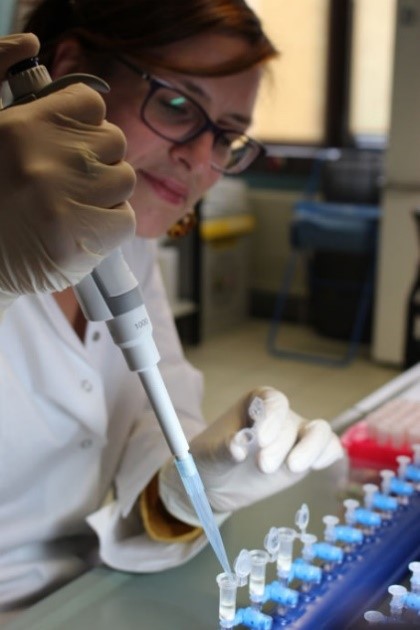You are here
DNA-based species validation of exotic mosquitoes (Diptera, Culicidae) in Belgium
In the framework of the MEMO project, a monitoring program was set up at 23 localities where exotic mosquito species (EMS) that may act as disease vectors can get introduced in Belgium. The early detection of EMS, before populations become established, is of paramount importance to prevent local transmission of mosquito-borne diseases. However, transmission of a pathogen requires the pathogen and its vector to be in the same place at the same time in a permissive environment, which generally only happens when the mosquito population is sufficiently large. The monitoring and morphological identifications were carried out by the Institute of Tropical Medicine (ITM). The Barcoding Facility for Organisms and Tissues of Policy Concern (BopCo) was engaged to perform DNA-based species identifications of specimens that are morphologically difficult to identify with certainty, EMS and 5 % of the mosquito specimens collected annually.
Keywords: Culicidae, MEMO project, introduction pathways, mosquito-borne diseases, monitoring, species identification, DNA-barcoding
 Aedes albopictus (tiger mosquito) ©ITM
Aedes albopictus (tiger mosquito) ©ITM
Wim Van Bortel, Researcher of the Eco-epidemiology Research Group at the Institute for Tropical Medicine (Antwerp)
Project summary
Due to international trade, tourism, and climate or ecological changes, mosquito species can be transported, dispersed, or introduced to, and eventually become established in new territories. Between 2017 and 2020, a nationwide monitoring project (MEMO) was set up to detect and evaluate the occurrence of EMS in Belgium. The project was funded by the Flemish, Walloon and Brussels health authorities and the Federal Public Service Health, Food Chain Safety and Environment as part of the national collaboration agreement in the Environment and Health policy fields (NEHAP). The partners in MEMO were the Institute of Tropical Medicine (ITM, coordinator), the Royal Belgian Institute of Natural Sciences (RBINS) and the Barcoding Facility for Organisms and Tissues of Policy Concern (BopCo).
Over the course of the project, a total of 52,478 mosquito specimens, representing 31 species (or species complexes) and five genera (Aedes, Anopheles, Culex, Culiseta, Coquillettidia) were collected. Three new species for Belgium were detected, viz. Anopheles daciae, Culex modestus and Culiseta longiarealata. Four EMS were detected one or multiple times, viz. Aedes albopictus, Aedes japonicus, Aedes koreicus and Anopheles pharoensis. The identifications of new and suspected EMS were validated by DNA-barcoding. EMS entered Belgium through different introduction pathways, including “classical” ways such as used tyre and lucky bamboo trade. Yet, Ae. albopictus was also caught for the first time in Belgium at parking lots along highways. Hence, passive ground transport appears to be a new introduction pathway for this species in Belgium. However, the species is not yet established in the country. In contrast, Ae. japonicus and Ae. koreicus have established overwintering populations at Natoye and Maasmechelen, respectively. Control campaigns to reduce these EMS population sizes have been undertaken. Additionally, Ae. japonicus was collected annually in Eupen along the Belgian-German border, which is in line with the prediction that the species might cross the border from well-established populations. Although in Eupen the species reproduces in summer, it is not believed to have established permanent populations yet. Finally, one adult specimen of An. pharoensis was collected once at the Airport of Liège, and represents most probably an escape from a foreign flight. Even though it is a common secondary vector of malaria, the likelihood for establishment is very low since the climatic conditions in Belgium are not considered suitable for this species.
In the short-term, Ae. albopictus and Ae. japonicus are the EMS which will probably be most frequently introduced into Belgium through passive ground transport or natural spread from established populations in France and Germany, respectively. These findings stress the need for a permanent and integrated surveillance and control management plan at national and regional levels.



Methodology
DNA-barcoding
To validate the morphological species identifications by the ITM, BopCo applied a DNA-barcoding approach. DNA-barcoding is a species identification method that uses DNA sequence data (“DNA barcodes”) to compare an unknown sample to a database of reference sequences of well-identified species. Based on an extensive investigation of the online public DNA sequence data, including all 32 Belgian native culicid species and eight exotic species of concern to Europe (three of which were effectively collected in Belgium during MEMO), BopCo has established an identification pipeline to obtain a reliable DNA-based identification to species or biotype level. Luckily, most of the time, the amplification and Sanger sequencing of a single DNA marker, the mitochondrial cytochrome c oxidase subunit I gene (COI), is sufficient to reach a species-level identification (67,5 % of the species). This way, BopCo was responsible for:
- the urgent DNA-based species identifications of potential EMS collected in Belgium in order to immediately confirm the morphology-based identifications and inform the authorities;
- the DNA-based identifications of specimens that are morphologically difficult to identify (e.g., immature stages like eggs, damaged specimens, species complexes);
- the annual quality control of morphology-based identifications in which the identifications of 5 % of the mosquito specimens collected is verified using DNA-barcoding;
- the creation of a specimen and DNA reference collection for all species collected by the MEMO project, and which is incorporated in the collections of RBINS.
Top and middle: Specimen collection preserved at -80 °C for DNA extraction ©RMCA
Bottom: DNA extraction ©RMCA
Used components of the LifeWatch Infrastructure
Barcoding Facility for Organisms and Tissues of Policy Concern (BopCo)
BopCo acts as a focal point for identifying biological materials upon request, by providing access to the expertise and infrastructure necessary to identify organisms of policy concern and their derived products. Identifications can rely on traditional morphology-based approaches employing the taxonomic expertise and specimen collections at RBINS and the Royal Museum for Central Africa (RMCA). However, when morphological identifications are not possible (e.g. early life stages, cryptic species, processed food items, …), DNA sequence data (or other DNA-based methods) are used for species identifications. In order to do so, BopCo has access to fully equipped DNA laboratories at both RBINS and RMCA.

Output
Publications
Deblauwe, I., Ibáñez-Justicia, A., De Wolf, K., Smitz, N., Schneider, A., Stroo, A., Jacobs, F., Vanslembrouck, A., Gombeer, S., Dekoninck, W., Müller, R., Van Bortel, W. First detections of Culiseta longiareolata (Culicidae, Diptera) in Belgium and The Netherlands. Submitted to Journal of Medical Entomology.
Deblauwe, I., De Wolf, K., De Witte, J., Schneider, A., Verlé, I., Vanslembrouck, A., Smitz, N., Demeulemeester, J., Van Loo, T., Madder; M., Dekoninck, W., Krit, M., Müller, R., Van Bortel, W. From a long-distance threat to the invasion front: Aedes invasive mosquito species in Belgium between 2007 and 2020. Submitted to Parasites & Vectors.
Up to date list of publications and communications at conferences can be found following this link.
Contact
- BopCo: bopco@naturalsciences.be
- Wim Van Bortel:
- Isra Deblauwe: ideblauwe@itg.be
Useful links
- Institute of Tropical Medicine (ITM):
- Barcoding Facility for Organisms and Tissues of Policy Concern (BopCo):
- Monitoring of Exotic Mosquito Species (MEMO):
- https://www.itg.be/E/memo-mosquito-monitoring
- http://bopco.myspecies.info/content/memo-monitoring-exotic-mosquitoes-diptera-culicidae-belgium
- http://bopco.myspecies.info/content/investigation-population-genetics-aedes-japonicus-diptera-culicidae-belgium
- https://pureportal.inbo.be/en/projects/memo-monitoring-exotic-mosquitoes
